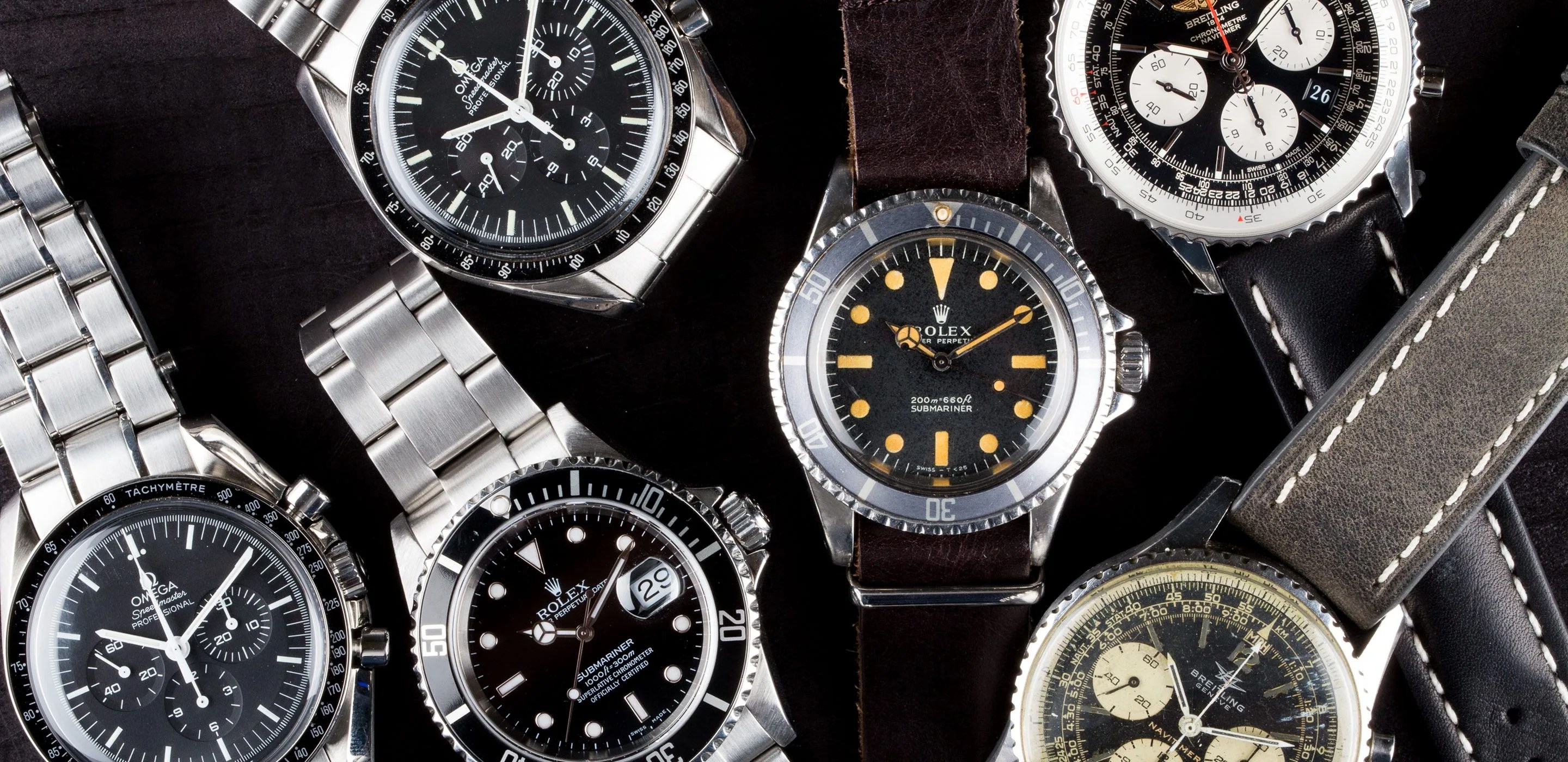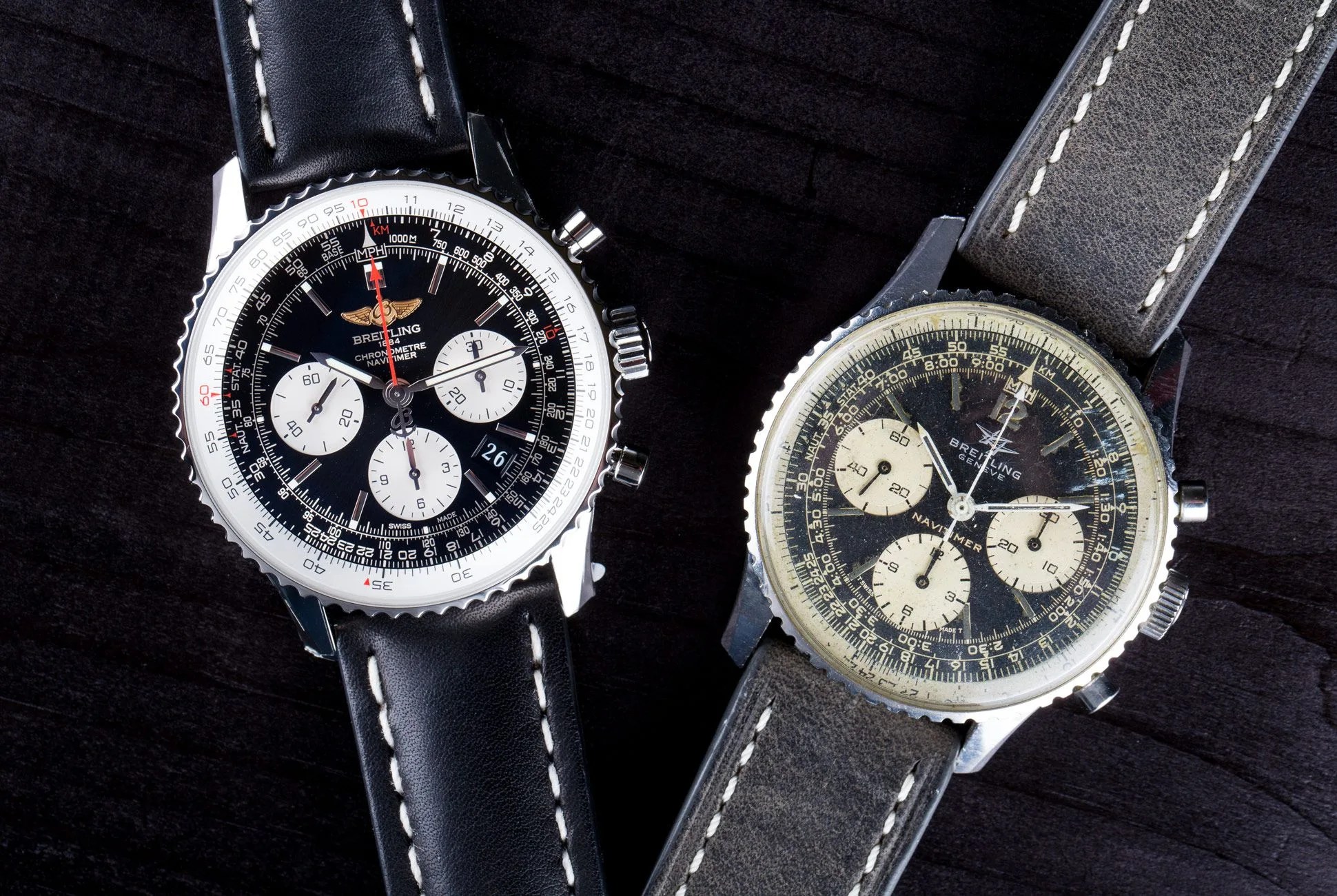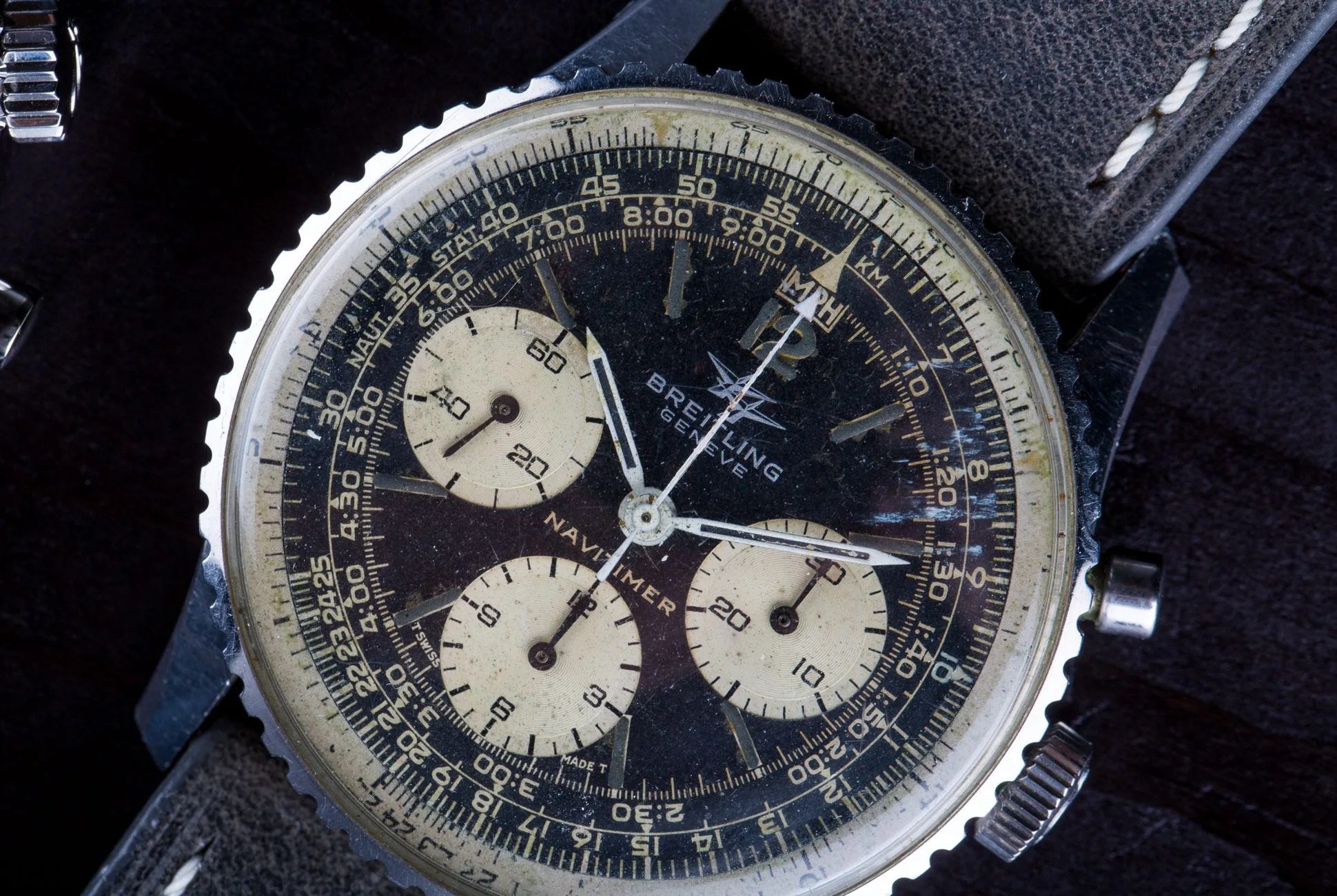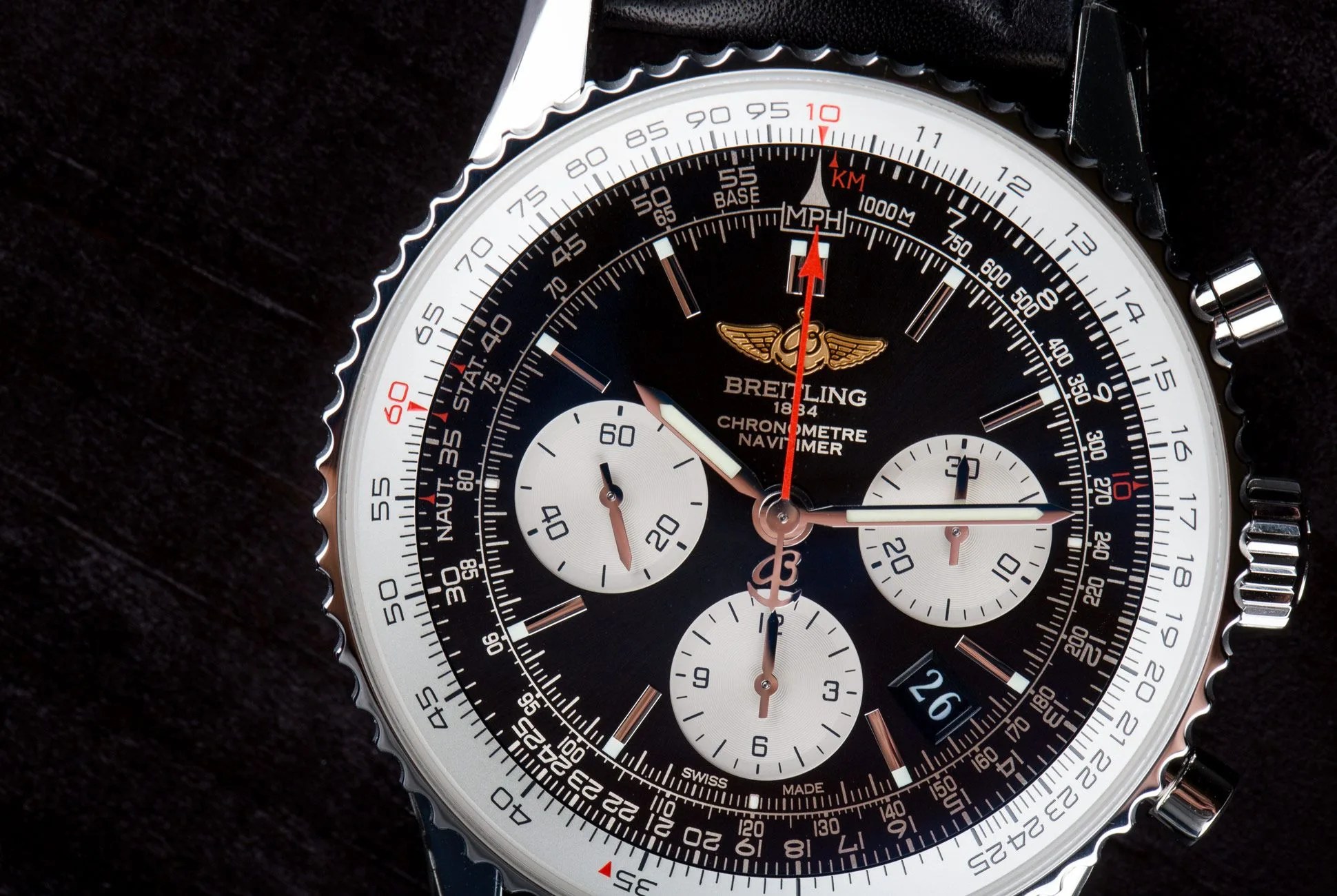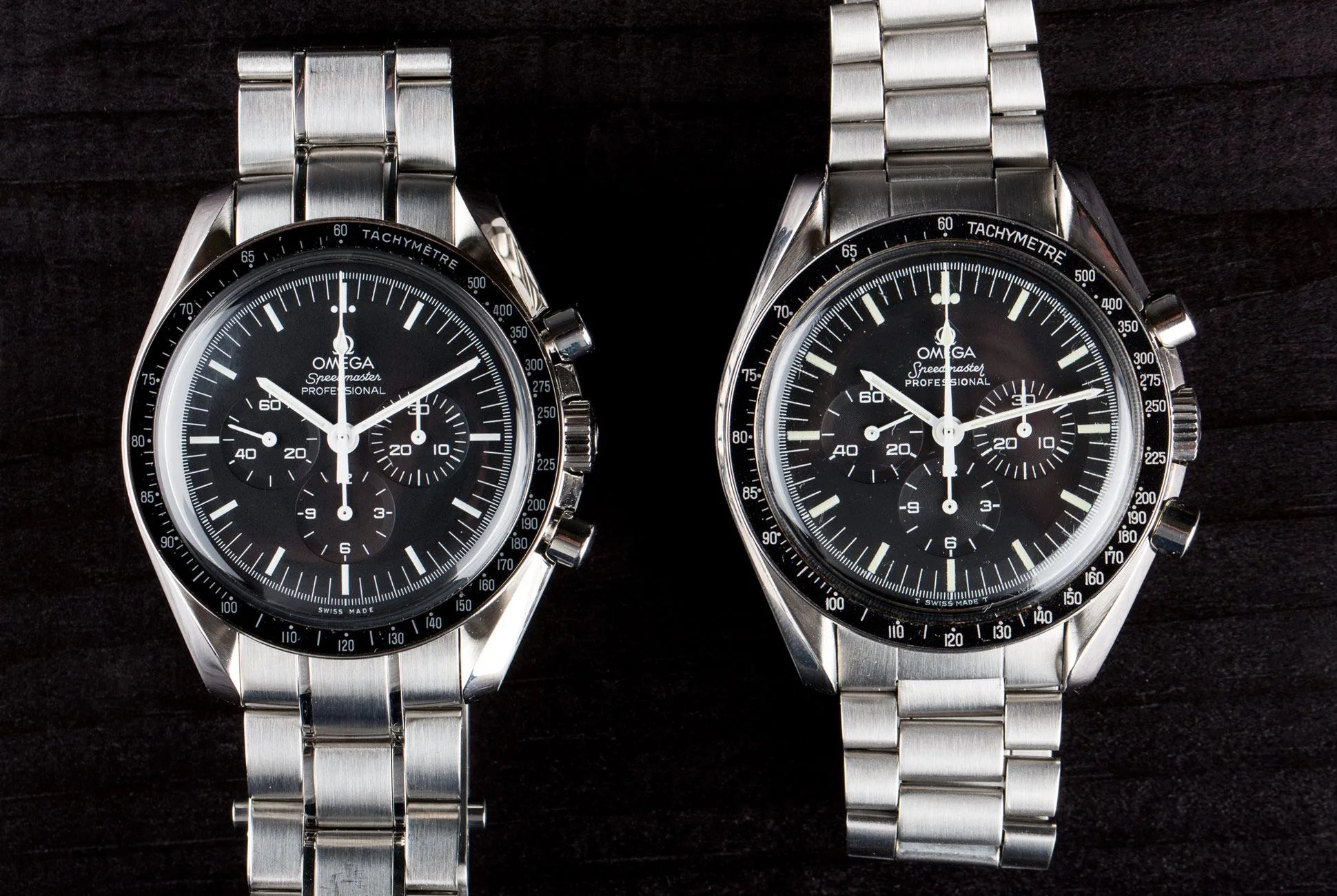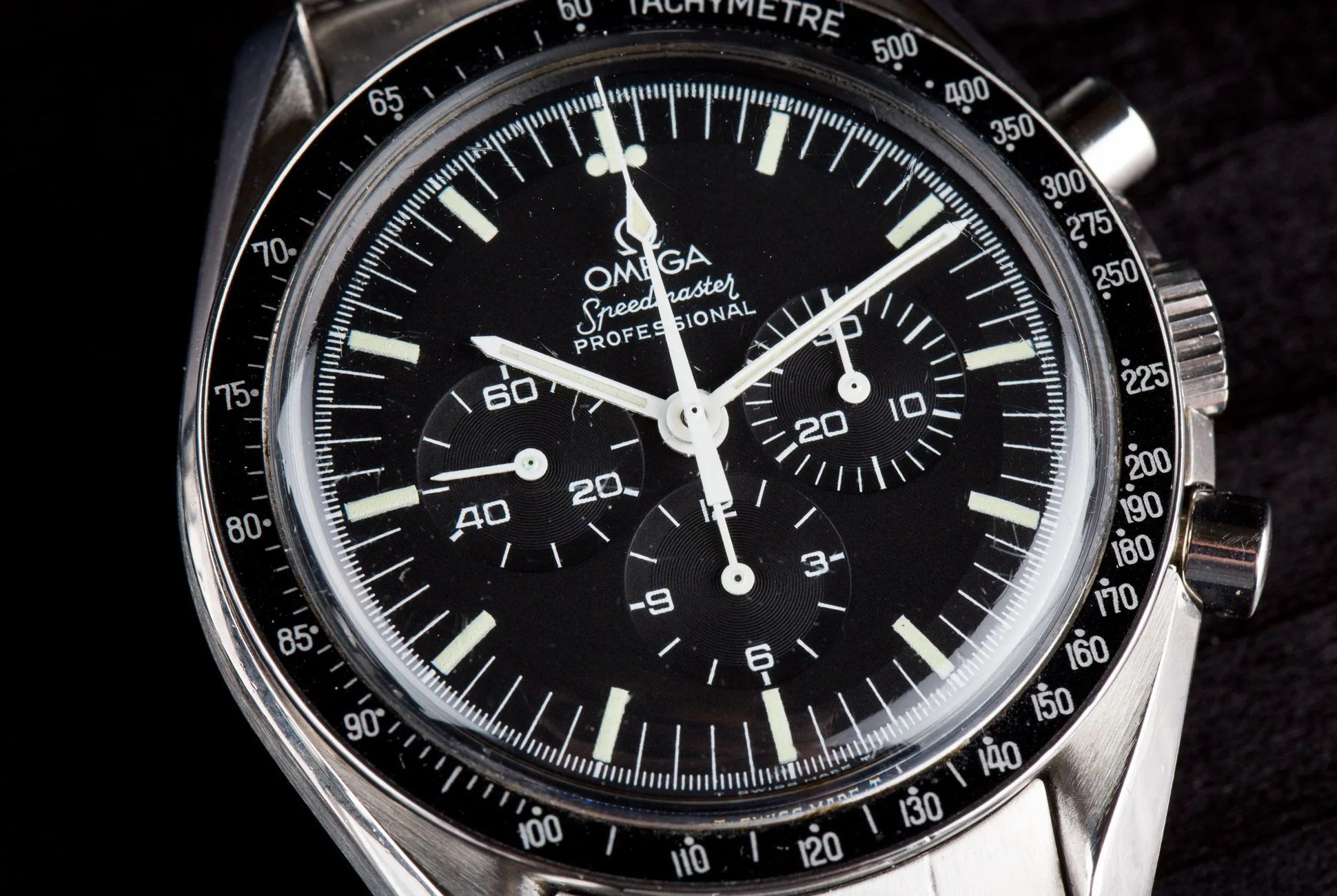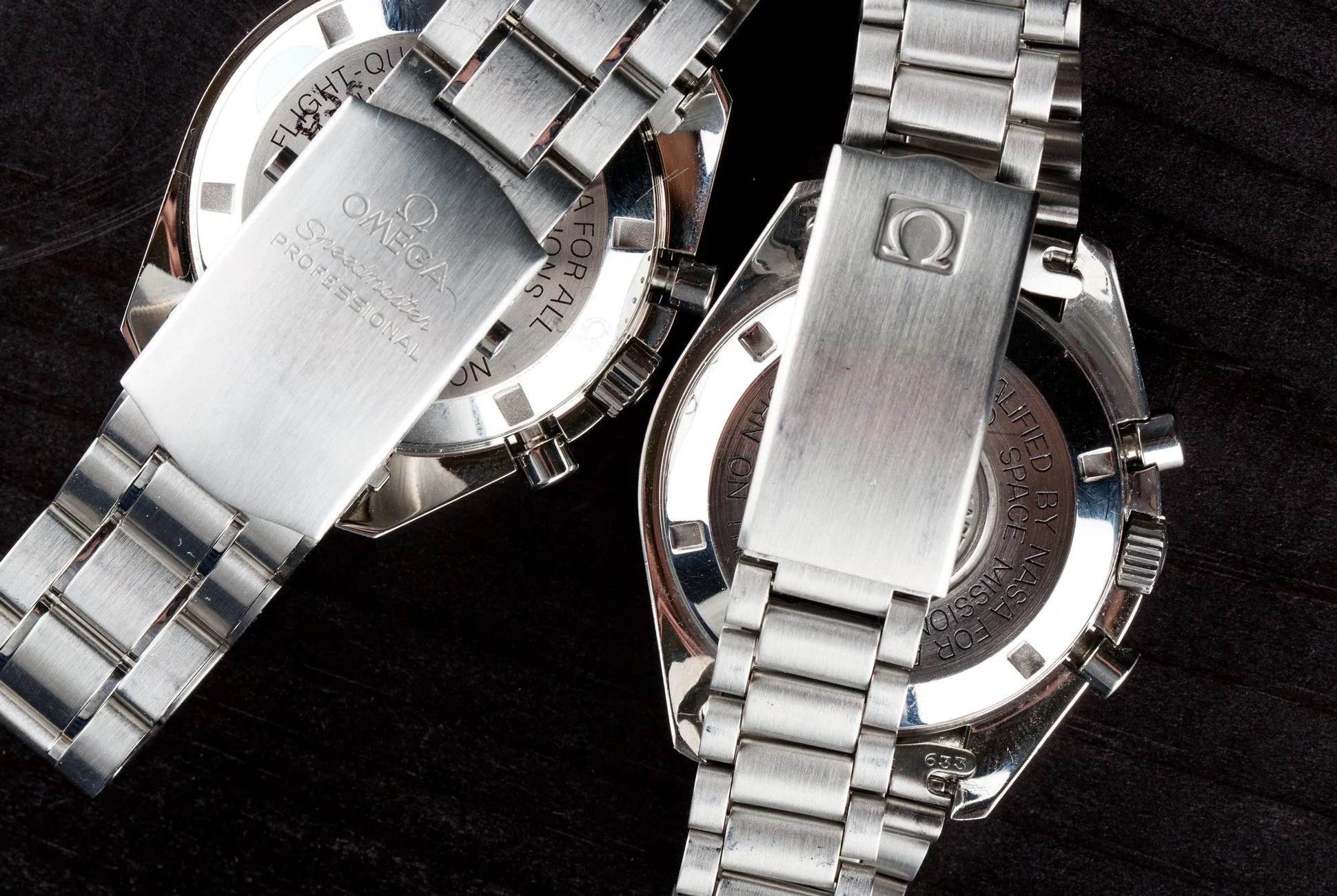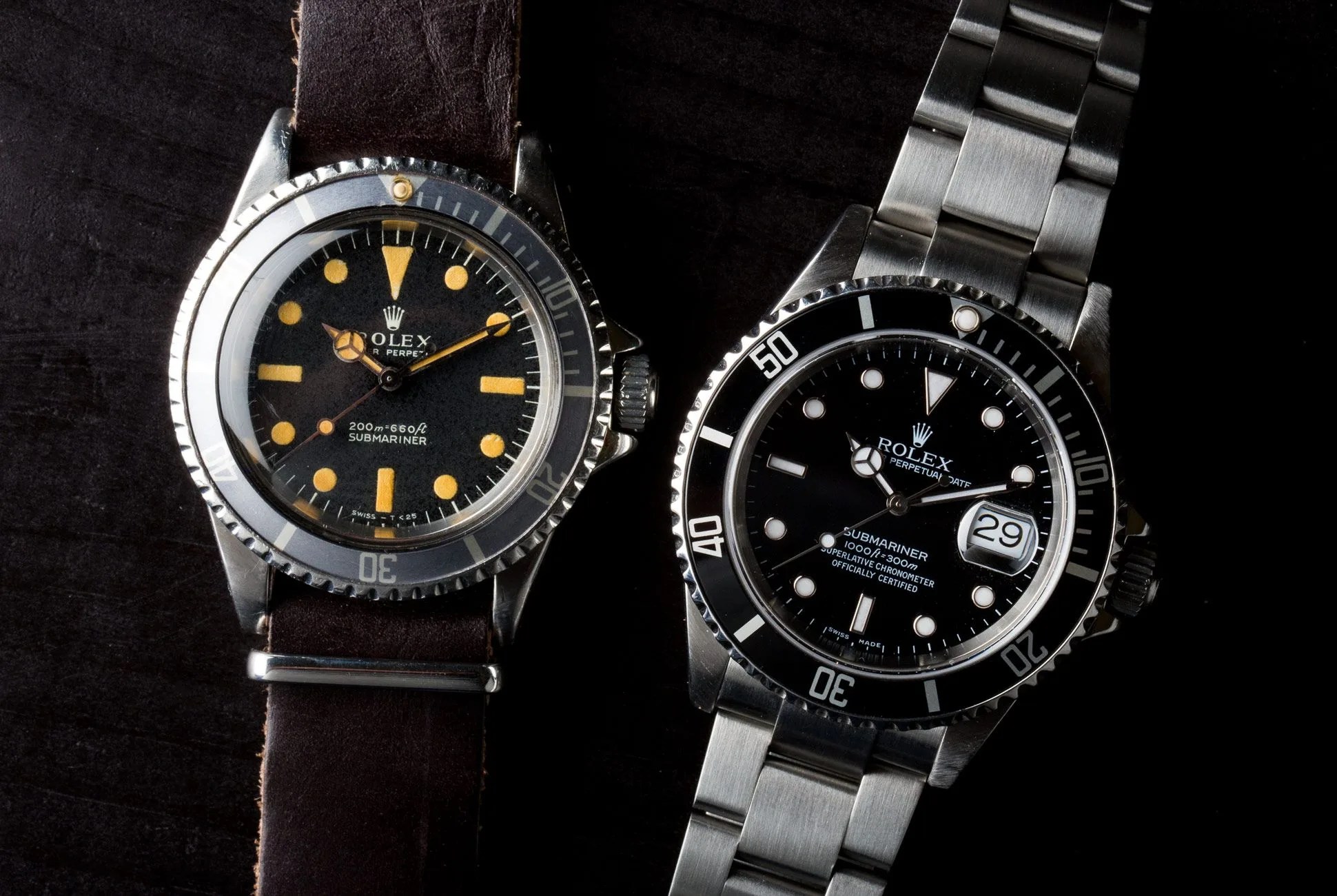In 1957 you could buy a Rolex Submariner for $150. If you adjusted that for inflation, you’d find that comes out to about $1,290 today. A modern Submariner starts at $7,500. The fact is, most watches that were birthed during the ’50s and ’60s as tools for divers, pilots, racers, etc. (like the Submariner) have evolved due to what A Blog to Watch founder Ariel Adams refers to as “luxurification” — quality and price escalations that, somewhat ironically, saved the Swiss mechanical watch industry from an influx of cheaper, more accurate quartz watches during the ’70s and ’80s.
Today’s watches are made with better, more durable materials and levels of detailing and finishing have increased. Parts that were once stamped are now milled. Dials that were once printed are now made with applied, three-dimensional markers. Watches have, for the most part, grown in size, in some cases to accommodate new movements or simply to accommodate the tastes of their wearers. And that’s all to say nothing of the improvements in finishing and engineering made to the aforesaid movements inside.
That’s all to say, you can still buy iconic, mid-century tool watches brand new today — but, while the basic designs may remain, they aren’t quite the same. Which watch is better, between the old and new, is up to your tastes. While some may appreciate the durability and dimension of a new watch, there’s something to be said for the simplicity of the originals (not to mention, in many cases, the lower price tags).
So, to help you to decide, we’ve gathered vintage and modern versions of three icons — the Breitling Navitimer, the Omega Speedmaster Professional and the Rolex Submariner — and compared them side by side to see how much has actually changed.
Breitling Navitimer
3 photos
Breitling’s Navitimer has been around for 64 years now, and, on the surface, little has changed between the 806 reference from 1970 and Breitling’s new Navitimer 01. The same reverse-panda color scheme, three-sub-dial layout and slide-rule bezel are still there. Little details like the triangle at twelve o’clock, the arrow at the tip of the seconds hand and font on the slide rule look almost identical, as well.
